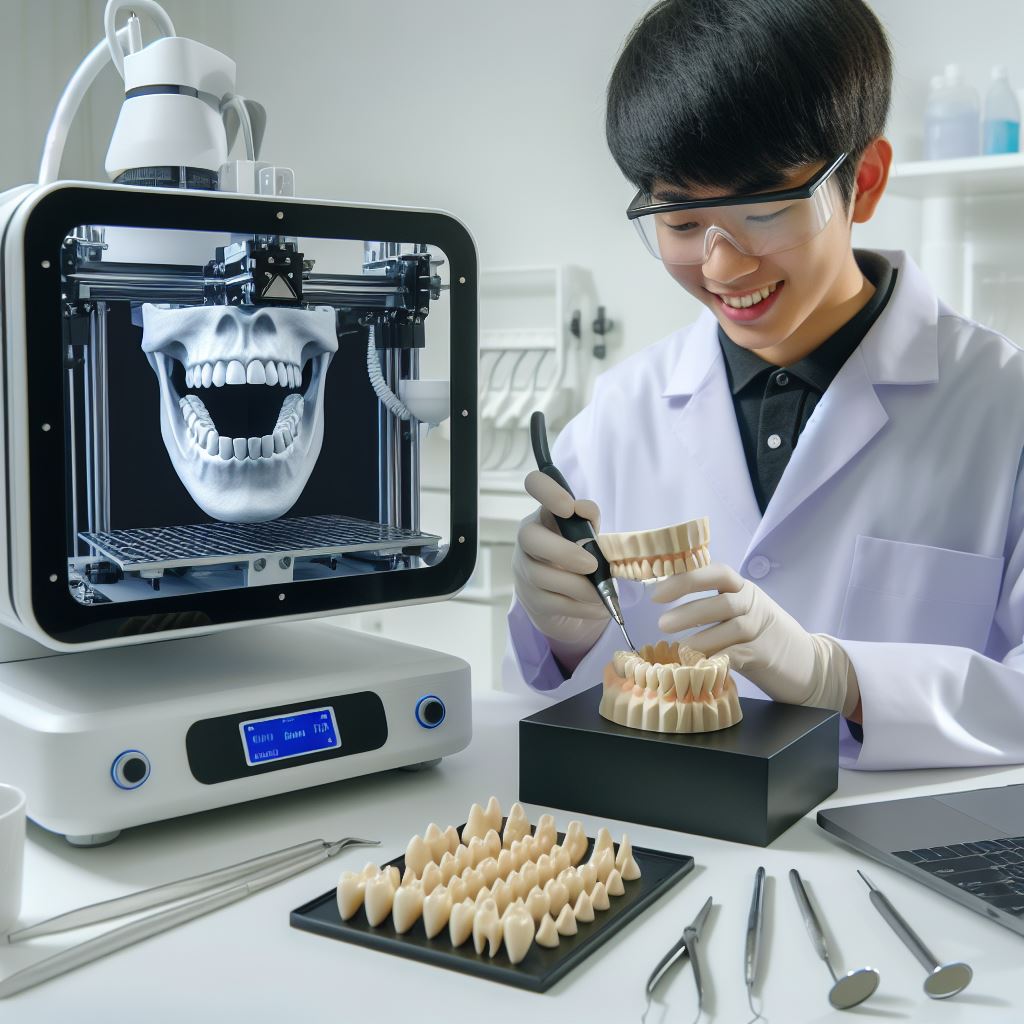Blog
3D Printing in Dental Education: Training the Next Generation

The integration of 3D printing into dental education heralds a transformative era for training future dental professionals. With its ability to create highly detailed dental models and custom tools, 3D printing stands at the forefront of technological advancements in dentistry.
However, like any burgeoning technology, it presents unique challenges that demand innovative solutions. This article delves into how 3D printing is reshaping dental education, the hurdles encountered along the way, and the strategies required to overcome these obstacles.
The Rise of 3D Printing in Dental Education
The landscape of dental education is being meticulously redrawn by the hands of 3D printing technology. Dental schools are increasingly incorporating 3D printers to produce accurate dental replicas, orthodontic appliances, and even surgical guides. Such tactile learning materials offer students a more interactive and realistic experience than traditional two-dimensional imagery or plastic models. By practicing on 3D-printed models, students gain valuable hands-on experience that closely mimics real-life scenarios.
Addressing the Cost of Innovation
While the benefits of 3D printing in dental education are clear, cost remains a significant barrier to entry. High-quality 3D printers and the materials they require represent a substantial investment for educational institutions. To manage costs, dental schools might explore partnerships with 3D printing companies, grants, or shared resource models. Additionally, considering the long-term savings in materials and improved educational outcomes can help justify the upfront expense.
Precision Meets Practicality: Tailoring Dental Education
The precision offered by 3D printing technology enables educators to tailor the learning experience to individual needs. Students can practice on models that replicate a wide range of dental conditions, ensuring a comprehensive education that covers more than just the common cases. This hands-on, personalized approach facilitates a deeper understanding and retention of knowledge, which is critical in shaping proficient dental professionals.
Overcoming the Skills Gap
One challenge educational institutions face is the skills gap; not all faculty members may be adept at using 3D printing technology. To address this, ongoing professional development and training programs are essential. These initiatives can help faculty stay abreast of technological advancements and integrate 3D printing into their curricula effectively, thereby enhancing the overall educational experience.
Improving Access to Cutting-Edge Care
3D printing also serves as a bridge to cutting-edge dental care. By training students on the latest technology, dental schools ensure graduates are well-equipped to adopt these innovations in their future practices. This preparedness is crucial for staying competitive and meeting the evolving demands of modern dentistry. Furthermore, it’s worth noting that while 3D printing is an advanced tool, it doesn’t necessarily impact insurance coverages such as “Does Medicare cover oral surgery?” Such coverages are bound by specific medical criteria rather than the technologies employed.
Challenges and Solutions in 3D Printing for Dentistry
Despite its potential, integrating 3D printing into dental education isn’t without its challenges. One major hurdle is the steep learning curve associated with mastering the software and hardware. To mitigate this, dental schools can provide specialized training sessions and peer mentoring and encourage collaboration between departments. Furthermore, developing a standardized protocol for creating and using 3D-printed models can streamline the process and ensure consistency in educational quality.
Enhancing Customization in Prosthodontics Education
The realm of prosthodontics within dental education is witnessing a significant enhancement through the use of 3D printing. This technology allows for the creation of customized prosthetics and restorations with unprecedented precision. Students can now design and fabricate dental crowns, bridges, and various implant components tailored to the specific anatomy of patient models. This level of customization not only improves the learning experience but also prepares students for the demands of personalized patient care. By mastering these techniques in an educational setting, future dentists will be better equipped to provide bespoke solutions in their practices, thereby elevating the standard of patient treatment.
Conclusion: Shaping the Future of Dental Practice
The advent of 3D printing in dental education marks a pivotal shift towards a more immersive and practical learning environment. By overcoming the challenges associated with cost, skills gaps, and access to technology, dental schools can fully harness the power of 3D printing. As we advance, this technology will not only shape how dental professionals are trained but also how they practice, ultimately leading to improved patient care and outcomes. As the dental machine and supplies industry continues to evolve, it will remain instrumental in providing the solutions that support the next generation of dental professionals.
